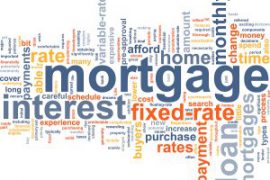We will often hear the phrase ‘my home is my castle’ in the UK and indeed the current willingness of buyers to offer over the asking price on property suggests we are willing to pay increasing amounts to put a roof over our heads.
If there is one thing I have learned about property though, it’s to be very cautious about ‘overpaying’. This is easier said than done when property prices are rising and there is typically such a shortage of properties to choose from.
So how do you actually work out how much a property is really worth and then how much you are willing to pay for it?
Most people these days go on-line to start hunting for property and so spend their time looking at the marketing price of a property. This isn’t though the best place to start. We actually have access to much better information which is far more useful to us called ‘sold property price data’.
Sold property price data can be found on sites which advertise properties and the great thing about them is they tell you exactly what price has been paid for similar properties on similar roads, so before you even start your hunt for a property, no matter what it is advertised at, you can find out what the true value might actually be.
Here’s an example of how sold property price data can help you. Take a property that’s advertised for say £500,000, and you think that’s a bit too expensive, when you look at sold property price data, a similar property might have only sold for £425,000 – so a lot less and it may be affordable. So the job is then to visit the property and road to check out why there might be a difference in value or if the property has been overpriced. Another good way to test the theory of a property being overpriced is if it then sits on the market for some months. Many buyers will ignore it as a result, thinking that there is something wrong with it, but if you visit, like it, keep an eye on it, you never know you may be able to secure it at a price you can afford.
For more information on property prices, rents and how to research what’s happening in your local market, visit www.propertychecklists.co.uk
Of course, this method isn’t perfect, but it is one way to help you feel a bit more in control of what is actually going on, rather than being at the mercy of agents or sellers telling you what they want for a property.
What’s the main drawback of this method? The main flaw to be aware of is if prices are rising quite fast and if in some areas, properties are going for more than they are even marketed for, as it takes several months for the sold property prices to appear on-line. So in London for example, property prices may have increased by 10% since the last ‘sold property price data’ appears. However, you can find this out from chatting to local agents and finding out what people are offering versus asking prices. You can also check on latest property price reports, such as the mortgage ones (Nationwide and Halifax) what they say property prices have gone up in your region, or county if quarterly data has just been published.
So, if you are thinking of buying a property, or indeed selling your own, start with sold property prices on the same road, or nearby, work out why some properties sell for more than others and then talk to local agents to find out what’s been happening over the last few months.




